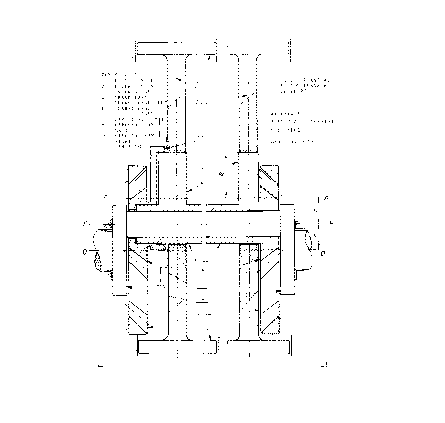Some of the information on this Web page has been provided by external sources. The Government of Canada is not responsible for the accuracy, reliability or currency of the information supplied by external sources. Users wishing to rely upon this information should consult directly with the source of the information. Content provided by external sources is not subject to official languages, privacy and accessibility requirements.
Any discrepancies in the text and image of the Claims and Abstract are due to differing posting times. Text of the Claims and Abstract are posted:
| (12) Patent: | (11) CA 2195886 |
|---|---|
| (54) English Title: | MULTICYLINDER BOXER CRANKSHAFT ASSEMBLY |
| (54) French Title: | VILEBREQUIN A PISTONS A TETES OPPOSEES POUR MOTEUR A CYLINDRES MULTIPLES |
| Status: | Term Expired - Post Grant Beyond Limit |
| (51) International Patent Classification (IPC): |
|
|---|---|
| (72) Inventors : |
|
| (73) Owners : |
|
| (71) Applicants : |
|
| (74) Agent: | |
| (74) Associate agent: | |
| (45) Issued: | 2000-04-11 |
| (22) Filed Date: | 1997-01-24 |
| (41) Open to Public Inspection: | 1998-07-24 |
| Examination requested: | 1997-01-24 |
| Availability of licence: | N/A |
| Dedicated to the Public: | N/A |
| (25) Language of filing: | English |
| Patent Cooperation Treaty (PCT): | No |
|---|
| (30) Application Priority Data: | None |
|---|
In typical internal combustion engines and compressors, etc., it is known to have a piston, moving in a cylinder, connecting rod and a crankshaft, as a crankshaft system. The gas and inertia forces press the piston against the cylinder side wall and produce bending stresses in the connecting rod. With increased speed the effect of inertia forces may exceed this of gas forces. The second harmonic inertia force may cause bigger stresses than its first harmonic. This puts heavy demand on all components, posing limitations to speed and power. Balancing is also difficult.
Dans la plupart des moteurs à combustion interne et des compresseurs ordinaires, se trouvent un piston, se déplaçant dans un cylindre, une bielle et un vilebrequin, agissant en tant que système de vilebrequin. Les forces d'inertie et les forces dues aux gaz pressent le piston contre la paroi latérale du cylindre et produisent des contraintes de flexion dans la bielle. Avec l'augmentation de la vitesse, l'effet des forces d'inertie peut dépasser celui des forces dues aux gaz. La deuxième force d'inertie harmonique peut provoquer des contraintes plus grandes que celles de sa première harmonique. Cela sollicite fortement tous les composants, ce qui oblige à limiter la vitesse et la puissance. L'équilibrage est également difficile.
Note: Claims are shown in the official language in which they were submitted.
Note: Descriptions are shown in the official language in which they were submitted.

2024-08-01:As part of the Next Generation Patents (NGP) transition, the Canadian Patents Database (CPD) now contains a more detailed Event History, which replicates the Event Log of our new back-office solution.
Please note that "Inactive:" events refers to events no longer in use in our new back-office solution.
For a clearer understanding of the status of the application/patent presented on this page, the site Disclaimer , as well as the definitions for Patent , Event History , Maintenance Fee and Payment History should be consulted.
| Description | Date |
|---|---|
| Inactive: Expired (new Act pat) | 2017-01-24 |
| Maintenance Request Received | 2015-11-19 |
| Maintenance Request Received | 2014-11-27 |
| Maintenance Request Received | 2013-12-19 |
| Maintenance Request Received | 2012-12-07 |
| Grant by Issuance | 2000-04-11 |
| Inactive: Cover page published | 2000-04-10 |
| Pre-grant | 2000-01-19 |
| Inactive: Final fee received | 2000-01-19 |
| Notice of Allowance is Issued | 2000-01-14 |
| Notice of Allowance is Issued | 2000-01-14 |
| Letter Sent | 2000-01-14 |
| Inactive: Application prosecuted on TS as of Log entry date | 2000-01-10 |
| Inactive: Status info is complete as of Log entry date | 2000-01-10 |
| Inactive: Approved for allowance (AFA) | 1999-12-21 |
| Inactive: Advanced examination (SO) fee processed | 1999-03-25 |
| Letter sent | 1999-03-25 |
| Advanced Examination Determined Compliant - paragraph 84(1)(a) of the Patent Rules | 1999-03-25 |
| Application Published (Open to Public Inspection) | 1998-07-24 |
| Small Entity Declaration Determined Compliant | 1997-01-24 |
| Request for Examination Requirements Determined Compliant | 1997-01-24 |
| All Requirements for Examination Determined Compliant | 1997-01-24 |
There is no abandonment history.
The last payment was received on 1999-11-08
Note : If the full payment has not been received on or before the date indicated, a further fee may be required which may be one of the following
Patent fees are adjusted on the 1st of January every year. The amounts above are the current amounts if received by December 31 of the current year.
Please refer to the CIPO
Patent Fees
web page to see all current fee amounts.
Note: Records showing the ownership history in alphabetical order.
| Current Owners on Record |
|---|
| WOJCIECH GRZEGORZ BARSKI |
| Past Owners on Record |
|---|
| None |